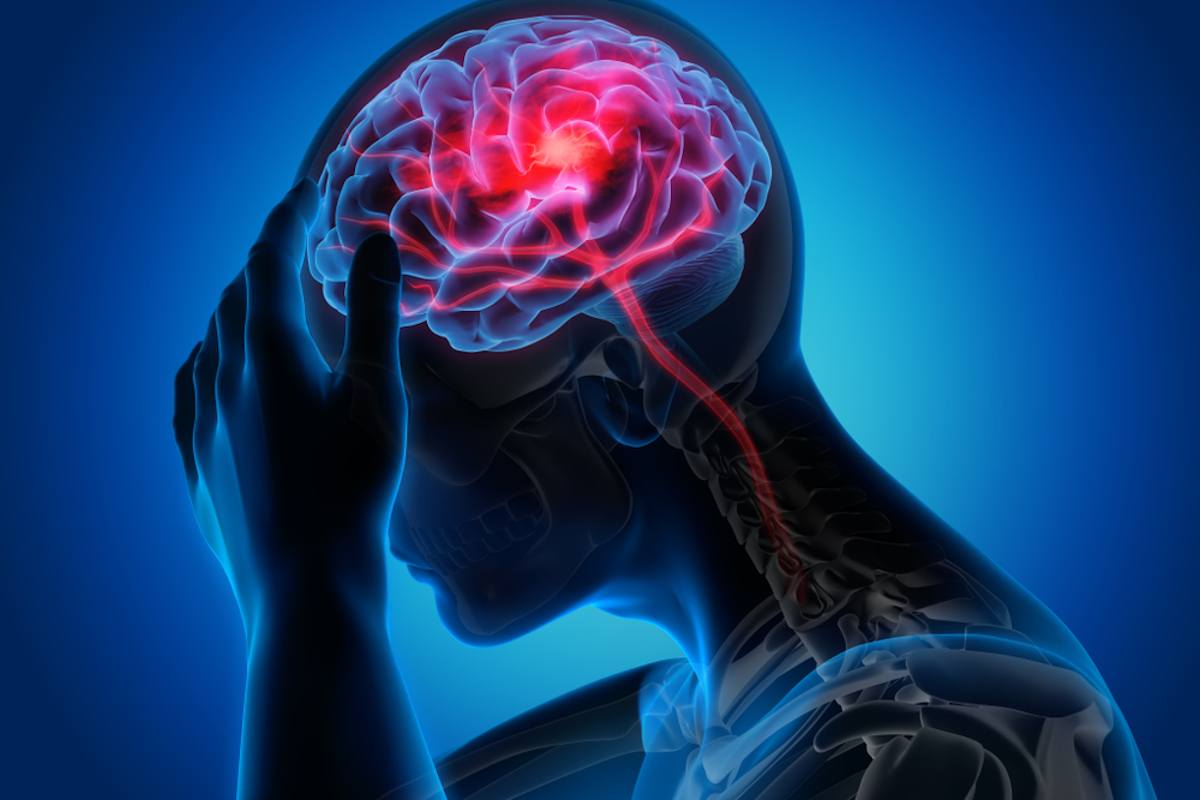
Benedikt syndrome: causes, symptoms, diagnosis and treatment of this stroke
Benedikt syndrome (also called paramedian midbrain syndrome), is a rare type of brain stroke that results in damage to the midbrain tegmentum: this is manifested by a series of neurological symptoms and signs
Causes of Benedikt syndrome
Benedikt syndrome is caused by an injury (ischaemic, haemorrhagic, tumour or tuberculosis) to the midbrain tegmentum and cerebellum.
In particular, the median area is compromised.
It often results from occlusion or haemorrhage of the posterior cerebral artery or paramedian penetrating branches of the basilar artery.
Affected neuroanatomical structures include the oculomotor nucleus, red nucleus, corticospinal tracts and decussation of the superior cerebellar peduncle.
Benedikt syndrome is characterised by the presence of:
- paralysis of the oculomotor nerve (third cranial nerve);
- eyeball looking downwards and outwards;
- diplopia;
- miosis;
- mydriasis;
- loss of accommodation reflex;
- contralateral loss of proprioception and vibratory sensations;
- contralateral hemiparesis;
- cerebellar ataxia;
- contralateral hemiataxia (hemithremor);
- involuntary choreoathetotic movements.
Diagnosis of Benedikt syndrome
Diagnosis is based on symptoms and signs; CT and MRI help confirm the diagnosis and delineate the cause or the vessel or region involved in the stroke.
Differential diagnosis
Benedikt’s syndrome has similar causes, signs and symptoms to Weber’s syndrome; the main difference between the two is that Weber’s is more associated with hemiplegia (i.e. paralysis) and Benedikt’s with hemiataxia (i.e. disturbed co-ordination of movements).
It is also similar to Claude’s syndrome, but is distinguishable in that Benedikt’s has more predominant tremors and choreoathetotic movements while Claude’s is more marked by ataxia.
Treatment
Deep brain stimulation can provide relief from some of the symptoms of Benedikt syndrome, particularly the tremors associated with the disorder.
Read Also:
Emergency Live Even More…Live: Download The New Free App Of Your Newspaper For IOS And Android
What Is A Positive Cincinnati Prehospital Stroke Scale (CPSS)?
AED With Rain And Wet: Guideline To The Use In Particular Environment
Cincinnati Prehospital Stroke Scale. Its Role In Emergency Department
How To Rapidly And Accurately Identify An Acute Stroke Patient In A Prehospital Setting?
Cerebral Haemorrhage, What Are The Suspicious Symptoms? Some Information For The Ordinary Citizen
The Severity Of Depressive Symptoms Over Time May Help Predict Stroke Risk
European Resuscitation Council (ERC), The 2021 Guidelines: BLS – Basic Life Support
Pre-Hospital Seizure Management In Paediatric Patients: Guidelines Using GRADE Methodology / PDF
New Epilepsy Warning Device Could Save Thousands Of Lives
Understanding Seizures And Epilepsy



